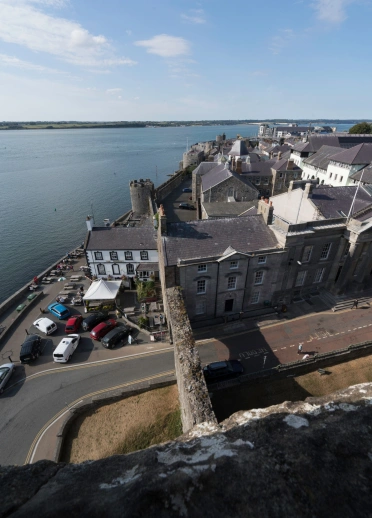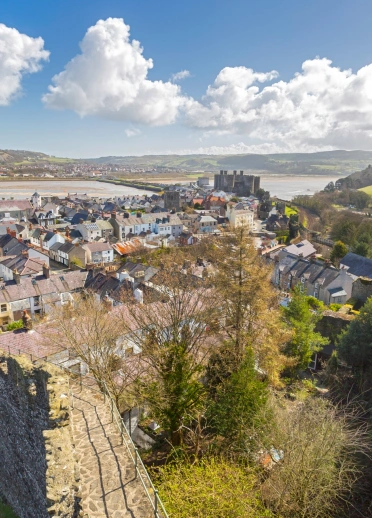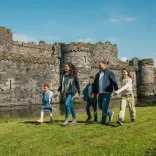We’re known for our colourful collection of castles in Wales, and they come in all shapes and sizes, from converted manor houses to weathered stone keeps. But four strongholds stand apart from the crowd as arguably the most famous, and perhaps most beautiful, castles in the country.
Beaumaris, Conwy, Caernarfon and Harlech, all located in what was once the historic county of Gwynedd in North Wales, were all built on the command of the English king, Edward I, during his attempted conquest of Wales in the 13th century. The structures were overseen by visionary medieval architect James of St George and erected to consolidate gains in territory by the English forces.
Today, with no warring armies roaming around, the strongholds serve as memorials to the might and vision of our English neighbours and testaments to the strength and resilience of the Welsh population who stood against them. Perhaps more importantly for your average visitor, however, is that all four grand structures, which collectively form one of Wales’ UNESCO World Heritage Sites, are wonderful attractions to explore, with battlements to gaze out from and former royal chambers to nose around.
What’s more, thanks to the castles’ relatively close proximity, all four can be visited in a single weekend, forming one unforgettable trail for castle connoisseurs.
Castell Harlech (Harlech Castle)
Starting at the most southerly of the four, Castell Harlech (Harlech Castle), built high on a sheer rocky crag overlooking Cardigan Bay, was known for its impenetrability in its heyday. The castle is said to have withstood the longest siege in British history, when Commander Davydd ap Ifan ap Einion held out against the Yorkist armies for an impressive seven years during the War of the Roses, an act that is said to have inspired the well-known patriotic Welsh song, Rhyfelgyrch Gwŷr Harlech (Men of Harlech).
Fortunately, the castle is far easier to enter these days, with one particularly vertiginous road (a previous Guinness World Record holder for the World’s Steepest Street!) the only major obstacle to overcome. Once inside, head up to the ramparts for neck-craning vistas of the Welsh coastline and far-off mountaintops of Eryri (Snowdonia) – a view as unbeatable as the castle was designed to be.
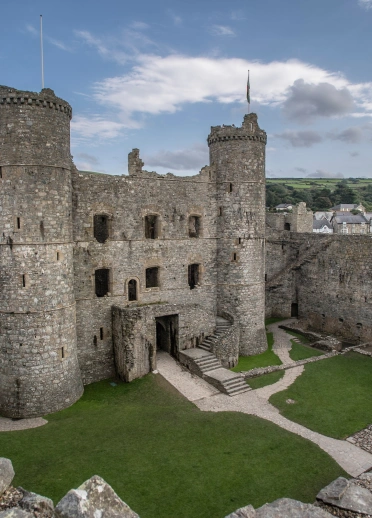
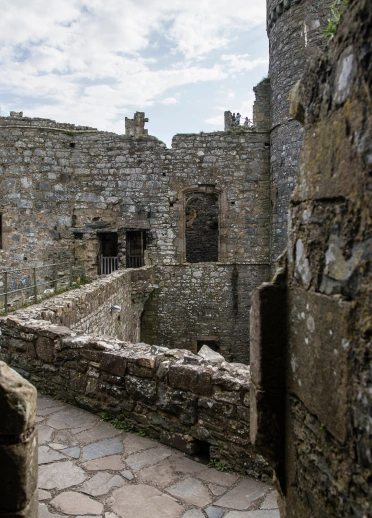
Castell Harlech (Harlech Castle) accessibility
- A car park with accessible spaces is located opposite the castle.
- The visitor centre, cafe, and ground floor of the castle are all wheelchair accessible.
- The visitor centre has toilets with accessible cubicles.
Castell Caernarfon (Caernarfon Castle)
Head north from Harlech and you’ll arrive at Castell Caernarfon (Caernarfon Castle), the most imposing of Edward’s famed quartet of North Wales castles – and for good reason. Standing on the edge of the Afon Seiont (Seiont River), it was built as the English king’s de facto headquarters in Wales (hence the thick curtain walls!), employing an imperial architectural style favoured by the Romans (who once inhabited this area and left behind a fortress of their own).
Having breached the castle’s outer defences, visitors can circle the grassy inner courtyard before climbing to the structure’s turreted Eagle Tower. It’s here where kings and queens once bedded down, and where Edward II, the first English Prince of Wales, is said to have been born. The castle also houses a museum dedicated to the storied history of the Royal Welch Fusiliers, Wales' oldest infantry regiment.
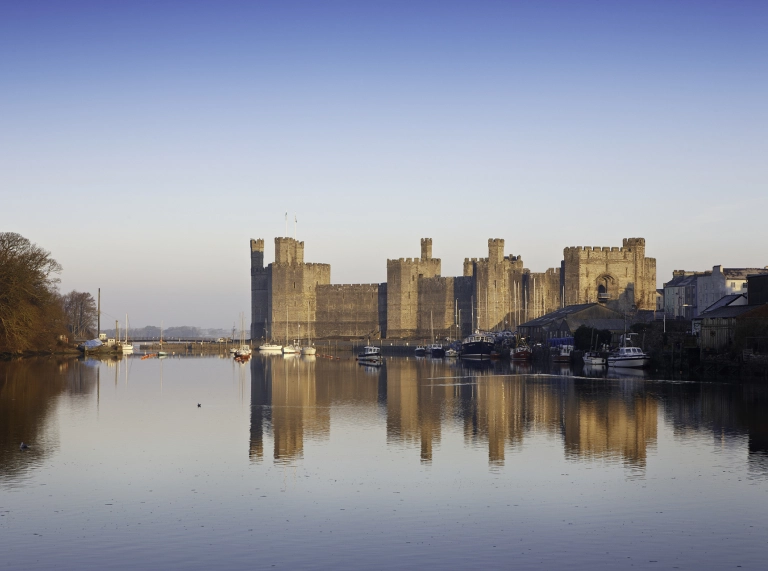
Castell Caernarfon (Caernarfon Castle) accessibility
- The castle doesn’t have a dedicated car park, but car parks are located in the town. All have accessible spaces.
- The ground floor of the castle and the visitor centre is wheelchair accessible via a ramp, following recent upgrade work.
- The Royal Welch Fusiliers museum is also wheelchair accessible.
- A lift to viewing platform (check the Cadw website before travelling), which gives access to the top of the King’s Gate and also the first floor café.
- Accessible toilets
There are also baby changing facilities
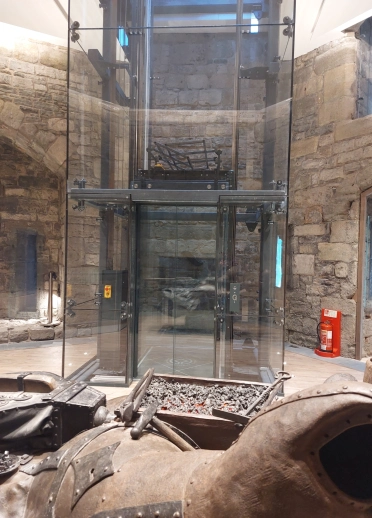
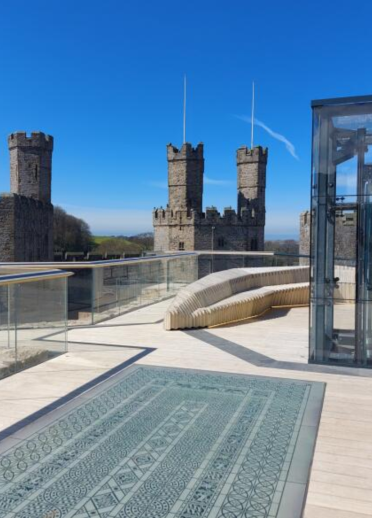
Castell Conwy (Conwy Castle)
Follow the coastline east from Caernarfon and you’ll soon spot the towering battlements of Castell Conwy (Conwy Castle) on the horizon. Despite its grand stature and serene location, with its high walls mirrored in the sailboat-bobbing waters of the adjacent estuary, Conwy has welcomed few royal visitors into its opulent interiors since its completion in 1287. King Edward I himself visited only once throughout the castle’s history, spending a miserable Christmas besieged within its walls (apparently with only a single barrel of wine in the cellar for comfort!).
But any modern day castle connoisseur should certainly not skip a visit to the stronghold, which is deemed to be one of the best-preserved medieval fortresses in Europe. As such, visitors are still able to climb the castle’s spiral staircases, wander through its old servant passageways and size up the most intact set of medieval royal chambers in Wales.
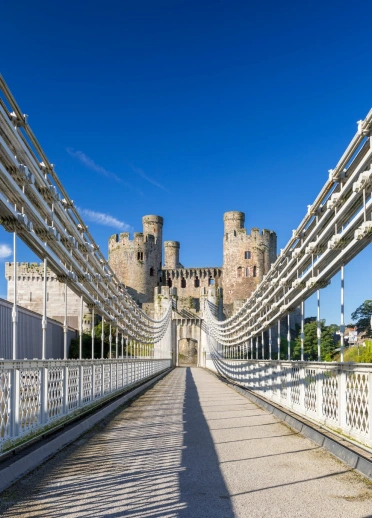
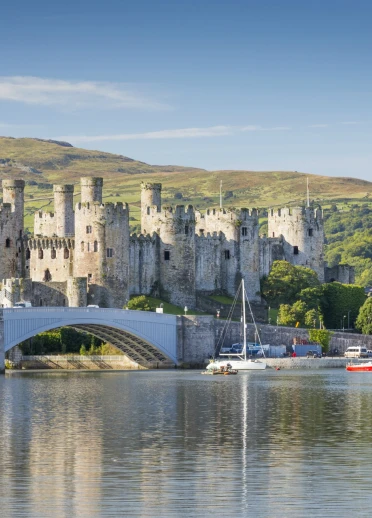
Castell Conwy (Conwy Castle) accessibility
- Parking at the castle is available via a council-operated car park located adjacent to the castle entrance. This car park has dedicated accessible spaces.
- The visitor centre is completely wheelchair accessible, however, the route from the visitor centre to the castle itself involves several steps.
- Accessible toilets are available on the ground floor.
Castell Biwmares (Beaumaris Castle)
You’ll have to leave the mainland to reach Castell Biwmares (Beaumaris Castle), crossing the mighty Menai Bridge onto the isle of Ynys Môn, known in English as Anglesey. The stronghold was Edward’s most ambitious project of all, with the king employing a workforce of over 2000 men and splashing out more than £7000 (today around £3.75 million) on building works in the first few months alone. Unfortunately for medieval architecture mavens, he never finished it, abandoning the project in around 1330 to redirect funds towards the invasion of Scotland.
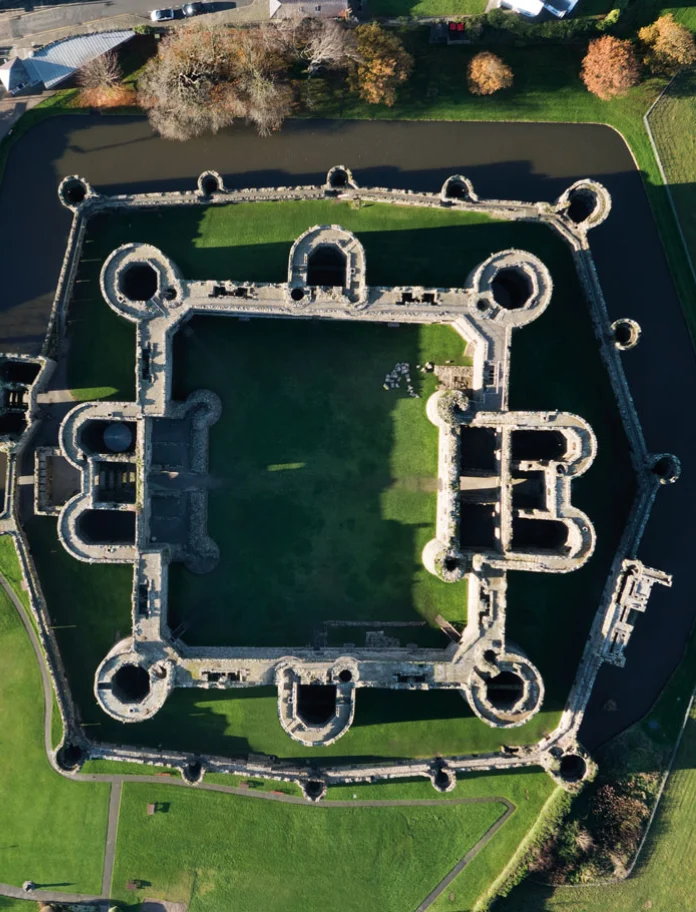
Still, the castle remains quite something to behold, a bold study in symmetry with a twelve-stone-tower outer wall, including over 300 shooting positions for defending archers, encircling the six larger towers that make up the inner wall. This outer wall is itself bordered by a moat, which once connected the structure to the sea. A visit to the castle pairs nicely with a trip to the nearby Beaumaris Gaol (Beaumaris Jail), a characterful Victorian-era prison that forms the town’s other notable historical attraction.
Castell Biwmares (Beaumaris Castle) accessibility
- The castle does not have a dedicated car park, but roadside parking, with a couple of accessible spaces, is available right by the monument. Alternatively, car parks, with more accessible spaces, are located a few hundred metres from the site.
- The small on-site visitor centre is fully wheelchair accessible.
- Entrance to the castle is via a wide ramp bridge, making the ground floor of the structure wheelchair accessible. It should be noted that the surface inside the castle is grass, though it is kept short throughout the year.
- There are no toilets on-site at the castle, but there are accessible public toilets 50 metres from the site.
The Walled Towns of Caernarfon and Conwy
Not content with simply building fabulous fortresses that would stand the test of time, Edward constructed entire fortified towns in both Caernarfon and Conwy, providing safe havens for his English soldiers and settlers to live.
As a result, both town centres have mighty stone walls running around them, with gateways to admit friends and towers to ward off foes. Despite their function as a line of defence, the two walls survive almost in their entirety today, with visitors still able to walk the full circumference of Conwy’s stone boundary.
Inside the walls, the higgledy-piggledy layout of laneways strikes an unmistakably medieval tone, but the small boutiques and homely cafes lining the narrow streets hint to more modern tastes. It’s a show of how the UNESCO-listed settlements have been transformed from a demonstration of English military power to great symbols of Welsh pride – which are far more welcoming to visitors today.
